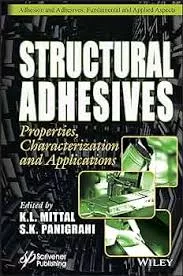Advancing Adhesives
Structural Adhesive Pushes Performance Boundaries for Composite Armor Systems
A new high-strength and highly ductile adhesive offers performance benefits in the harshest operating environments.

As part of a collaborative project focusing on coatings and joining systems for lightweight materials, the U.S. Army Combat Capabilities Development Command (DEVCOM) Army Research Laboratory (ARL) tasked PPG to develop a high-strength, highly ductile structural adhesive to meet the requirements of the U.S. Department of Defense’s (DoD) test method standard MIL-PRF-32662, Tier I-III specification. MIL-PRF-32662 incorporates a decade of rigorous research efforts to statistically correlate the complex ballistic response of adhesively bonded armor assemblies to universally translatable and commercially relevant quasi-static mechanical properties.1
Designed to meet or exceed MIL-PRF-32662, this one-component, epoxy-based thermoset technology is expected to enable the development and manufacturing of personal, vehicle, and aircraft composite armor systems with unparalleled performance in the harshest operating environments. Through innovative materials design, PPG researchers were able to push performance boundaries to achieve high adhesive ductility without sacrificing overall adhesive strength, maximizing the material’s toughness.
Strength and Ductility
Development began with benchmarking a series of PPG commercial adhesive and sealant technologies. In general, single-lap joint performance was similar to competitive technologies: high strength or high elongation was achieved, with the combination of both properties remaining elusive. Modifications to conventional toughened epoxy adhesives eventually produced an extremely homogenous nanoscale toughening phase within an optimized epoxy-based matrix.

Figure 1. Single-lap joint benchmarking results for commercial adhesive and sealant formulations against MIL-PRF-32662. The red data point demonstrates the lap shear performance of a conventional structural adhesive formulation, falling into the Group II specification range. The blue data point shows the lap shear performance of the developed Group I adhesive platform. Single-lap joint images to the right compare the deformation of the aluminum substrate during testing for these two groups of adhesives.
Single-lap joint testing indicated a stronger, more flexible material had been developed, producing a 150% increase in strain to break and a 50% increase in breaking strength, as compared to conventional toughened epoxy adhesives (see Figure 1). Thus, a formulation platform was developed for epoxy-based structural adhesives meeting Group I performance of MIL-PRF-32662.
The significant deformation of the aluminum substrate observed during single-lap joint testing shown in Figure 1 raised the question as to whether the observed high displacement values were due to deformation of the adhesive or yielding of the aluminum substrate under high shear stresses. To minimize any substrate deformation effects, a thick adherend shear test (TAST) was employed.
This test utilizes thicker aluminum substrates and a shorter overlap length to minimize or eliminate any yielding of the aluminum substrate during testing. TAST testing also uses a digital extensometer positioned around the bondline to measure and correct for any minor yielding of the aluminum during testing.

Figure 2. Bulk shear properties of adhesives measured by thick adherend shear test (TAST) ISO 11003-2. Shear strain of the adhesive was measured independent of substrate deformation using a digital averaging extensometer. The area under the shear stress-strain curve represents the strain energy density of the adhesive (i.e., the total energy absorbed by the adhesive prior to failure).
The results of the TAST testing are shown in Figure 2. In comparison with a conventional structural adhesive, the new adhesive platform displays a higher shear strength and a much greater shear strain before failure.
The observed shear yielding of the adhesive material and high degree of strain before failure demonstrates significant ductility within the bulk adhesive layer at high stress levels and explains the observation of both higher shear stress and greater displacement to failure in the single-lap joint testing discussed previously. The area under this shear stress-strain curve represents the total energy absorbed by the adhesive before failure, which was measured to be 2.5-fold greater for the Group I adhesive platform as compared to a conventional epoxy-based structural adhesive.

Table 1 and Figure 3. Validation data and photographs (provided courtesy of ARL).
In addition to single-lap joint strength and displacement (Tier I), MIL-PRF-32662 specifies single-lap joint performance under elevated temperatures and after hot-wet conditioning (Tier II), as well as resistance to crack propagation (Tier III). Validation data from ARL testing is presented in Table 1 and Figure 3. To date, this technology is the only material approved to all three tiers of the specification.
Expanding Beyond Defense Applications
Following the MIL-PRF-32662 qualifications and the initial testing phase, PPG became interested in expanding the structural adhesive’s applications to additional market segments. In markets such as aerospace, automotive, and industrial, adhesives are required to meet many additional criteria and performance properties, in addition to those that were included in the MIL-PRF-32662 specification and in initial formulations of PPG PR-2930™. Such performance properties include broader cure conditions (time and temperature), specific viscosity and rheology, adhesion to a variety of substrates, environmental resistance, fatigue and high-speed impact resistance, product shelf stability, and numerous industry-specific mechanical tests.

Figure 4. Left: Single-lap joint shear strength vs. test temperature. Lap joints were equilibrated at the respective test temperature for a minimum of 30 minutes prior to testing. Right: Single-lap joint shear strength vs. cure time and temperature. The temperatures represent the oven temperature, and the time is total time in oven.
Many of these market-specific properties were eventually included into the final PR-2930 product. Some properties, such as a wide range of operating temperatures and water/corrosion resistance, were inherent to the product due to the polymer chemistry. Other properties, such as improved cure speed and cure over a broad range of temperatures, had to be built into the formulation (see Figure 4).
Figure 5 compares the performance of the initial prototype and the final PR-2930 product for one specific market segment. Despite the formulation changes to meet these additional requirements, lap shear performance (MIL-PRF-32662 Tier I-III) remained nearly identical compared to the initial prototype.

Figure 5. Adhesive properties beyond MIL-PRF-32662 that were built into PR-2930 to meet a broader range of market applications.
Finally, all of the tests specified in MIL-PRF-32662 are quasi-static. However, polymeric materials are viscoelastic, with mechanical properties highly dependent on test rate and temperature. PR-2930 was also evaluated in a series of high-strain rate tests conducted at the City College of New York (CCNY). Both the high strength and high ductility was maintained in high-strain rate shear and bending tests over a wide temperature range (-50°C to 63°C).
Winning Innovation
In November 2020, PPG PR-2930 structural adhesive received the 2020 Innovation Award from The Adhesive and Sealant Council (ASC). The annual ASC Innovation Awards Program recognizes innovation in adhesive and sealant product developments. The awards identify significant impact chemistries that contribute to downstream industries’ unmet needs and advancements in technology. The award is intended to foster and encourage innovation across the adhesive and sealant industry and academia.
For PPG, the award validates the company’s ability to provide cutting-edge innovations and technologies. The greatest achievement for PPG, however, is knowing that its people and products play a vital role in the protection of the men and women of the U.S. armed forces globally.
For more information, visit www.ppg.com.
Note: Images provided by PPG. PR-2930 and PPG logo are registered trademarks of PPG Industries Ohio, Inc.
Reference
- MIL-PRF-32662 “Performance Specification, Adhesive, High-Loading Rate, for Structural and Armor Applications,” 2020.
Looking for a reprint of this article?
From high-res PDFs to custom plaques, order your copy today!






